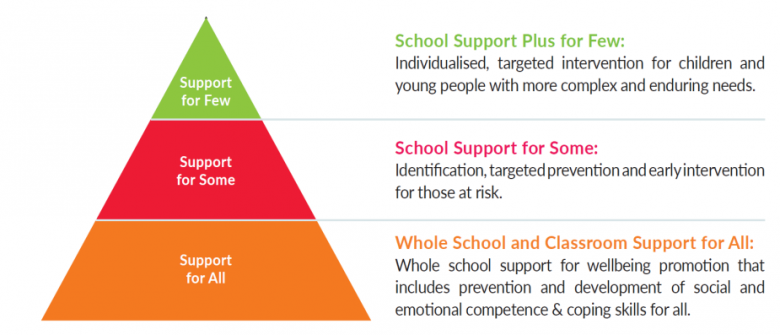How school can support your child?
Published on
Schools are allocated a certain number of Special Education Teachers (SET) and Special Needs Assistants (SNA) every year. School management teams identify where the support needs are within a school and SET teachers and SNA’S are deployed to support that need at any given time. Typically, the Special Education team lead by the Special Educational Needs Co-Ordinator in the school are involved in this process. This support allocation process is intended to be fluid and flexible and can be reviewed regularly when new and emerging needs within the school are identified. Schools adopt a Continuum of Support approach to do this.
The Continuum of Support framework is used by the school Special Education Team to allocate support resources at three levels of a Continuum.
Support for All
Support for Some
Support for Few

Support for All means that all children are benefiting from whole school and classroom approaches that support all learners including children who have additional needs. Examples of this type of support includes:
Whole School and Classroom Wellbeing Programmes.
Whole School and Classroom Team Teaching Approaches.
Whole School Positive Behaviour for Learning Programmes.
Support for Some means that some children are supported in small groups; to help them to develop skills in certain curriculum and or social-emotional areas. Examples of this type of support include:
Small Group Language/Reading /Maths Programmes and Support.
Small Group Social/Emotional Skills Programmes and Support.
Small Group Sensory Regulation Programmes and Support.
Support for Few means that a few children may receive individualised support at school to help them to develop skills in certain curriculum and or social-emotional areas, as well as possibly requiring 1:1 assistance at certain times during the school day. Examples of this type of support include:
Individualised curriculum adaptations in reading, spellings language and maths.
Individualised Positive Behaviour Support strategies and interventions.
Individualised Sensory Regulation Support
More information on the types of strategies and interventions for children accessing Support at this level of the Continuum of Support can be accessed here from our Terrific Transitions article series.